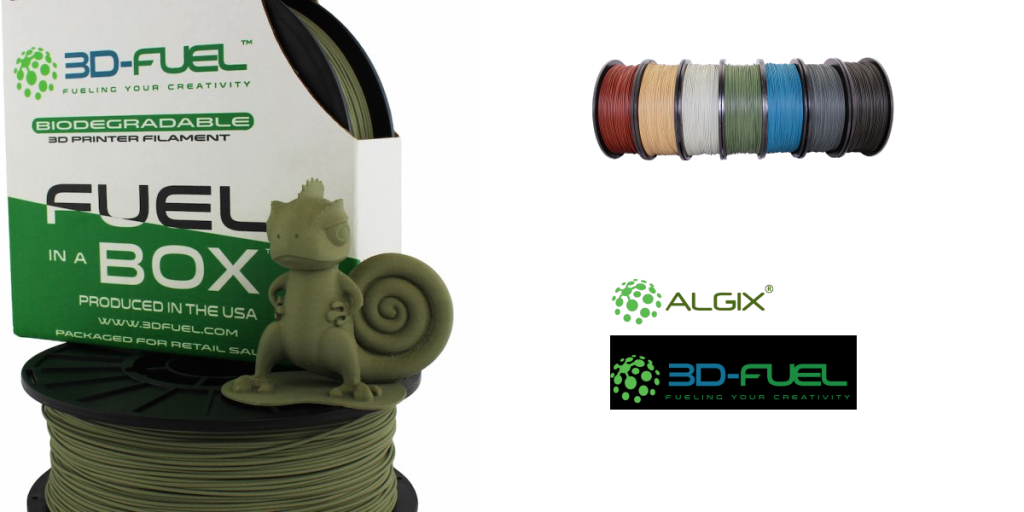
In April, the two companies announced that they would be collaborating to create a new line of 3D printer filament from algae. Today, that filament has been officially released. Algae-Fuel is available in 1.75 and 2.85 mm spools, in a wide range of nature-inspired colors: Primordial Red, Terrestrial Tan, Algae Green, Evergreen, Agave Blue, Tundra Gray and Swamp Black. According to 3D Fuel, the filament prints with a natural-feeling texture similar to bone or sandstone. At the moment, pre-orders are being taken; prices are not available on the website yet, but send them a message through the order page and they’ll send you more details.
“We believe that these products will be very attractive to many users of FDM/FFF technology,” says Barbara Zeller, Marketing Manager for 3D Fuel. “Our Algae-Fuel product line can help to increase the adoption of more sustainable filaments, because the user doesn’t have to compromise on aesthetic, sustainability, performance or quality.”
“Part of the beauty of our process is that we take nuisance algae from aquaculture, water treatment facilities and even from algal blooms in ponds and lakes,” says Ashton Zeller, Director of R&D for 3D Fuel. “We are helping to aid in ecosystem balance and are able to provide more sustainable materials without utilizing arable cropland (as most other bioplastics require) for our bio-feedstock.”
3D printing’s environmental merits are frequently up for debate, but the fact is that the technology does go through a lot of plastic. So it’s very encouraging to see an increasing number of companies who are coming up with creative ways to make the industry more sustainable, particularly through the manufacture of ingenious, environmentally-friendly filaments. 3Dom USA has been in the news in recent months for its filaments made from coffee and beer, as well as for its biodegradable filament spools. Recycled filaments are also becoming more common thanks to companies like Fila-Cycle and Colletivo Cocomeri. There are a lot of options out there if you want to make your 3D printing a zero-waste endeavor. Just pick your material; if there’s not a filament made from it already, there probably will be soon.
Have you tried out this new filament? Let us know your experiences in the Algae-Fuel Filament forum thread on 3DPB.com.
